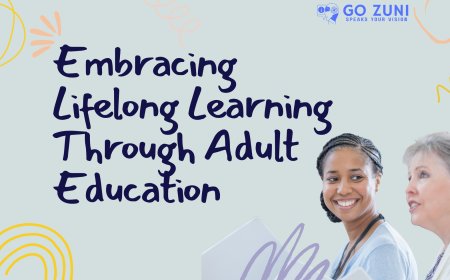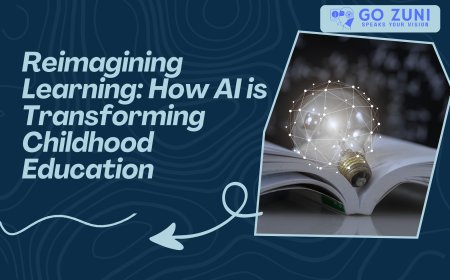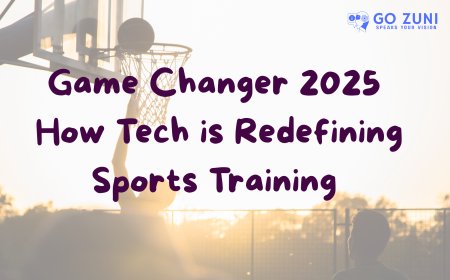How AI in Education Is Transforming Student Learning
Discover how AI in education enhances personalized learning, supports teachers, and creates inclusive, engaging classrooms for students worldwide.

Children today are learning differently compared to traditional school settings.
Technology has become essential in shaping educational methods and student engagement. The emergence of AI in education reshaped how lessons are delivered everywhere. Teachers now integrate classroom AI tools into classrooms for personalized student instruction. AI in education adapts to learners' pace, adjusting difficulty for optimal understanding.
Key Ways AI is Revolutionizing Education for Children
From personalized lessons to global learning access, here are the major ways artificial intelligence is transforming modern classrooms and student experiences:
Personalized Learning Experiences
AI in education powered platforms analyze student behavior to design custom learning paths.
Each child receives lessons tailored for ability, interest, and progress. This ensures no student falls behind or feels unchallenged anymore. It creates a more inclusive learning environment for every student. Artificial intelligence in education promotes student success through targeted content delivery daily.
Virtual Tutors and Homework Helpers
AI in education applications provide 24/7 academic support through virtual learning assistants. These tools answer questions, explain problems, and reinforce essential study habits. They serve as AI homework help tools when teachers aren't physically available anymore. Such systems help children gain clarity on complex subjects quickly. This supports continuous learning beyond regular school hours and locations too.
Discover how AI is transforming your daily routine in this insightful read: AI in Everyday Life.
Data Driven Feedback for Educators
Classroom AI monitors student performance through quizzes, assignments, and daily participation.
Real-time feedback helps teachers modify lessons for improved classroom AI performance. Teachers identify learning gaps earlier using these intelligent analytic tools. Data insights allow educators to provide support before challenges escalate. This precision improves both teaching strategy and AI and education outcomes efficiently.
Enhanced Engagement Through Gamified Learning
Learning becomes enjoyable through AI in education powered educational games and simulations. Gamification holds attention while reinforcing important academic skills creatively. These games reward achievements and track progress using engaging visuals. Children absorb more knowledge when play combines with structured learning goals. AI schools benefit from such fun and focused instruction models.
Smart Classrooms and Automation
Classroom AI manages administrative tasks, freeing time for personalized instruction instead. Tasks like grading, attendance, and scheduling are automatically handled efficiently. Smart boards and devices adjust content depending on AI schools activity levels. Lighting, temperature, and audio respond dynamically to classroom needs instantly. This environment supports focus and energy without teacher micromanagement constantly.
Language Learning Made Easier
AI in education translators break language barriers for multilingual and international students. Speech recognition software helps children improve pronunciation and verbal fluency gradually. Language apps adapt vocabulary exercises to learner strengths and weaknesses. They offer instant corrections and repeat lessons until mastery is achieved. This encourages confidence and fluency through safe, nonjudgmental AI and education sessions.
Special Needs Support
Children with learning disabilities benefit greatly from artificial intelligence in education driven accommodations. Screen readers, voice commands, and visual aids personalize learning interfaces easily. These technologies adjust to cognitive challenges or sensory processing disorders fast. AI tools in education enhance accessibility and build independent learning habits gradually. Students receive needed support without feeling isolated or treated differently.
Remote Learning Integration
AI in education enables remote education through virtual classrooms and smart learning platforms. Children participate in class even when unable to attend physically. Assignments are submitted online, with real-time grading and adaptive follow-ups. Live discussions, recorded lectures, and simulations enhance digital learning accessibility. AI schools support learning continuity during closures or unexpected disruptions.
Parental Involvement Through Technology
Parents track academic progress through AI in education dashboards and daily reports.
They receive insights about attendance, homework, and AI homework help performance instantly. This builds stronger partnerships between teachers, parents, and students collectively. Alerts notify families about academic concerns or behavioral patterns early. Parental involvement becomes consistent and data-informed through connected learning systems.
Career Readiness and Skill Building
Artificial intelligence in education recommends academic paths based on student performance and interest. Career simulations expose children to professional scenarios and workplace environments. Children develop soft skills, coding, and digital literacy through guided modules. This early exposure builds confidence in future employment or entrepreneurship. AI in education prepares students for modern career landscapes realistically.
Teacher and AI Collaboration
AI and education work hand in hand rather than in competition. AI in education supports rather than replaces teachers in the learning process. It handles repetitive tasks so teachers can focus on students. Human interaction remains critical for emotional and social student development. Teachers use classroom AI tools to enhance, not replace their instruction abilities. This collaboration empowers both educators and learners through smart partnership models.
Global Learning Accessibility
Children in remote areas access quality learning through AI in education powered platforms.
Educational content becomes available without needing advanced local infrastructure anymore. Offline features allow lessons in low-bandwidth regions effectively and affordably. Such inclusion promotes equity in AI and education across different global communities. This minimizes disparities caused through economic or geographic learning limitations.
Real-Time Assessment and Progress Tracking
AI in education continually assesses student learning through quizzes, tasks, and participation.
Reports are generated instantly, tracking improvement and identifying problem areas. Students can review material or repeat activities until concepts are clear. This constant feedback loop drives performance and supports better knowledge retention. AI homework help tools play a key role in this continuous improvement process.
Ethical Considerations and Challenges
While benefits are numerous, ethical questions still surround artificial intelligence in education. Concerns include data privacy, screen time, and biased content algorithms. Children’s safety must be ensured while using educational technologies responsibly. Regulations are needed to protect digital rights and student information. Balancing technology with well-being is essential for sustainable AI in education adoption.
Conclusion
AI in education has transformed how children learn, interact, and solve problems.
Classrooms have become more adaptive, inclusive, and efficient through automation. Children engage deeper with lessons thanks to classroom AI and smart educational technologies today. Although challenges exist, the benefits of AI in education are immense. Future generations will grow smarter, more confident, and globally connected through learning supported by artificial intelligence in education. Visit Go zuni for more such valuable resources to help you stand out in the era of AI trends.
What's Your Reaction?
 Like
0
Like
0
 Dislike
0
Dislike
0
 Love
0
Love
0
 Funny
0
Funny
0
 Angry
0
Angry
0
 Sad
0
Sad
0
 Wow
0
Wow
0




































